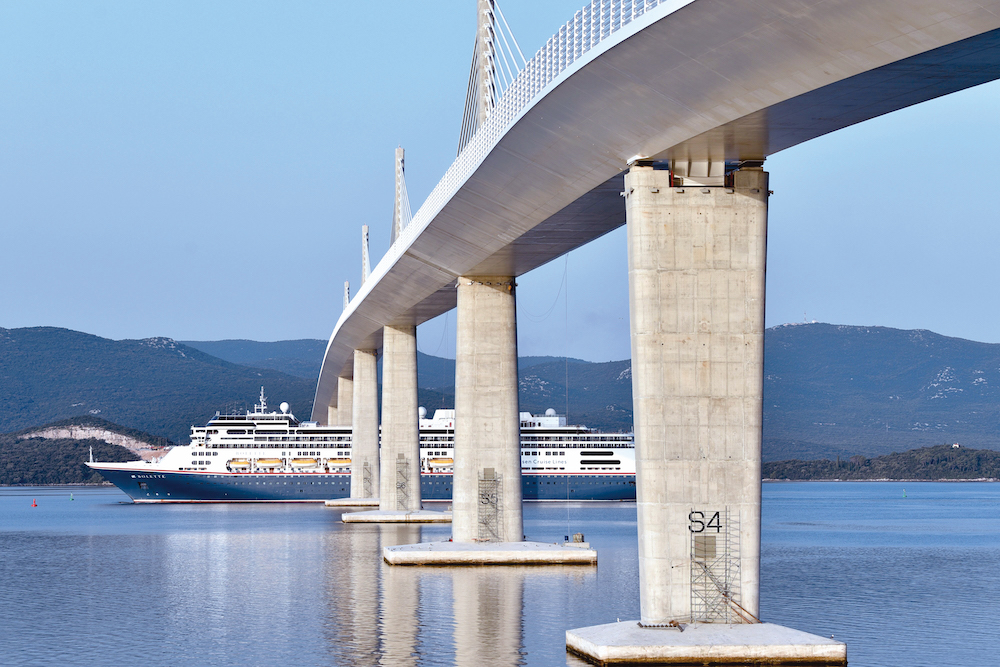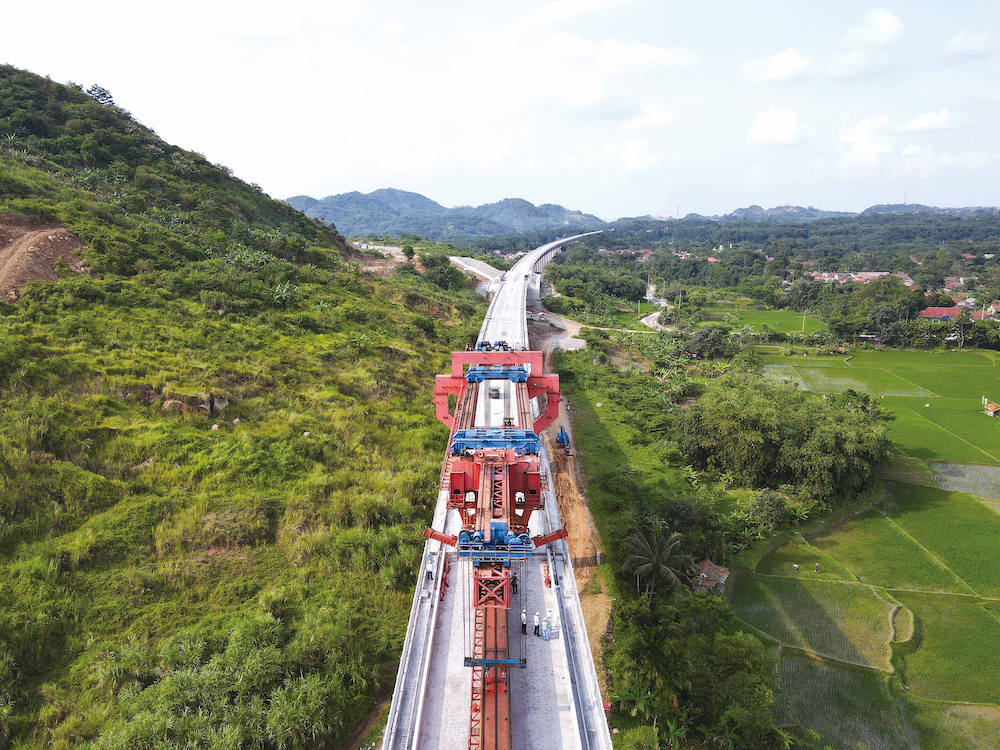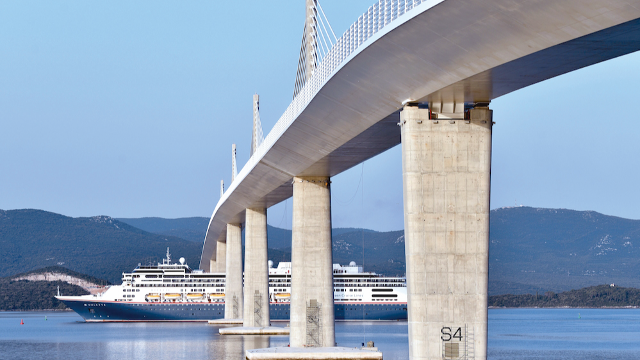【中文版】鄭赤琰:“一帶一路”倡議及其偉大成果
Since its establishment from 2013, the Belt and Road Initiative (BRI) has been able to achieve benefits in various aspects. Firstly, to build infrastructure including ports, railways, hydropower dams, bridges, airports, etc. These achievements were basically all over the world. Secondly, it promotes regional and global peace and stability.
Author: Prof. CHANG Chak Yan
Dean, Taima Journalism and Information Academy, Malaysia
Former Department Head, Department of Government and Public Administration, the Chinese University of Hong Kong

BRI: a huge opportunity to build economics and social developments
Firstly, on the achievement of infrastructure, BRI allows China to strengthen relations with Russia by infrastructure projects. Russia is the largest country in the world. But most of its Siberia territory and North Pole are underdeveloped in terms of road, railway and ports. Since both sides have reached agreement in dealing with BRI projects. The rail and road construction extended from North East China through Siberia to Moscow is underway. Project in North Pole to open up a big area for economic development is also unprecedented. Also, the three republics in Central Asia, namely Turkmenistan, Tajikistan, Kyrgyzstan are enthusiastic to work with BRI. Together with China, Russia and three Republics, they have formed collaborative mechanism handle all relevant projects to develop their longtime isolated place with BRI projects, central area is open up as a link to connect China Xinjiang from the east, to Europe countries in the West, to Pakistan, Afghanistan, India, Iran, Middle East in the South. As a whole, this BRI joint projects between Russia & such Republic states create a huge opportunity for them to build economics and social developments. Because of less economic development, Russia is considered as big butnot strong nation despite of her strong military build-up. This BRI cooperation would certainly boost Russia to a strong economic power in the near future. Together with China and Russia’s economic build-up, the world development would then stabilize in many aspects, such as bigger market volume.
Other than this, BRI projects carried out in Southeast Asia have also brought ASEAN nations closer among themselves as well as China. Projects carried out in Indo-China Peninsula involving five nations namely Laos, Myanmar, Thailand, Cambodia and Vietnam have integrated the region economically, socially and geographically. Such as train project started from Kunming through Laos has completed. A further connection to Thailand, Cambodia and Vietnam are also in the planning process. Riverway of Mekong Rivers has linked five nations together with trade, investment and transportation. Projects carried out in Malaysia with a railway accossed Malay Peninsula between Klang Port in strait of Malacca to Port of Kuantan in South China Sea is also under construction. A high speed railway between Bandung and Jakarta has newly completed. It will shorten the travelling time from nearly four hours to only one hour, connecting tens of millions of people between these two cities. Several ports are being planned under BRI in Java, Sumatra, Sulawesi and Kalimantan. These ports are badly needed for Indonesia which is divided by nearly twenty thousand islands. Inadequate port facility has already failed to relocate over crowded population in Java Island, which has 60% population of the country.
Because of this uneven spread of population, Widodo government has decided to move the capital to Kalimantan. Kalimantan is the biggest island of the country but urbanised land is less than one percent. China has a good experience to relocate population in the country. With this BRI at hand, China could certainly help to rebuild Indonesia with various infrastructure. The Philippines is another country badly divided by over seven thousand islands. Its population confined mainly in Luzon. A big island of Mindanao located in the South housed only six million Muslims against the total population of 100 millions of the country. This uneven spread of population has caused separation movement from the South. Between 2016 to 2022, Duterte decided to develop Mindanao. He seeked help from BRI. Several infrastructure projects have been materialized in Mindanao.
Under the BRI: from longtime isolated to first time connected
Historically, linkage between Asia and Europe had been broken more than two thousand years. The worst happened between the war of Roman Empire and the Middle East Islamic Kingdom. After nine attempts of crusades, Roman Empire had failed to breakthrough the blockage. This resulted in Columbia discovering a so- called “India of America” . Although the Western nations had established their colonies all over the world, and the world was badly divided by the West. But since the establishment of BRI ten years ago, a cross continental train from China, through central Asia, to Europe and reaching Morocco in western Africa, has been created first time in history. This train trades merchandise all countries along its way. A total worth of goods reached over hundred billion RMB annually. Balkan Peninsula is known for its war against each other within the region. The ancient Greek civilization was destroyed by Macedonia known as barbarism historically. But under BRI, a port was built in Greece. A railway has been connected from this port to its hinterland reaching Balkan region. A railway was also built in Serbia. A longtime isolated region has been opened up. A win-win situation for Greece and Balkan Peninsula has achieved.
Other than Asia and Europe, BRI offer for Africa is also very significant. Basically, the strategy of BRI in Africa is to unite all nations together to form “A Union of African Nations”. Collectively, 48 nations have joined the Union. In order to build a firm pan-African organization, China takes the lead to form a “48+1” so that China can call a grand meeting for all 48 countries in order to facilitate a common development project.Through this meeting, various infrastructure projects—involving nations between land locked region and coastal areas—would become more realistic. A railway, highway and ports covering all directions will become a beakthrough for a divided Africa to become an integrated Africa. After 10 years of hardworking, BRI by now has built ports along east coast and south-west coast. Also railways and highways are constructed between coastal area and hinterland. Most important at all, Congo—a big country in the heart of Africa—is open-up first time in history. A road has been built from Congo to the eastern coastal area. After 60 years of independence from colonial rule, war was never ended in Africa. But after the establishment of African Union, the construction of infrastructural projects have created “win-win” situation for all members. A divided Africa has now become a united Africa.

Finally we come to the case of Latin America. USA takes this region as her “back yard”. Out-siders are not allowed to take part in Latin American affairs. Since USA chooses to oppose BRI as a challenge of her hegemonic status all over the world, any attempt to involve this region to participate BRI would certainly irritate USA.
Due to this difficulty, BRI development in this region has fallen far behind of other regions. Yet a breakthrough is likely in Brazil due to its relative independent policy in her handling with USA relationship. Brazil is invited to join BRICS (also known as “Golden Bricks of Five”) to oversee BRI development of the world. The latest visit to China by President Lula has proven a possible and firm commitment to BRI. In this visit, Lula signed an agreement to accept several programs with China, including to workout plans of BRI infrastructure and agricultural developments. The most significant independent policy shown in her agreement was to use RMB in replacing American dollars when dealing with trade and investment. Brazil is a big and developing country. It tris to use BRI to imitate Chinese development experience. A strong and developed Brazil emerging from Latin America is certainly expected. By then BRI development covering other countries in the region will have a better chance.
BRI: a “win-win” philosophy
To conclude, until now there are more than 150 countries and 32 international organizations that have signed BRI initiative deals with China. As expected, the total value of business created by BRI will be over thirty trillion RMB in 2030. Secondly, the BRI is to promote regional and global peace and stability. When the world is under the domination of the western powers, their philosophy is based on a “zero-sum” game. Under this philosophy, nations compete against each others. The winners get all resources from the losers. Human resources are turned into slaves for the winners. Natural resources are freely exploited by the winners. This circumstances occurred for hundreds of years. Although all colonies were supposed no longer existed under the pledge of United Nations since 1960’s. But the philosophy of “zero-sum” game is still valid. Those winners from the past are still dominating. The losers weak in military are unable to compete and still remained as poor and helpless in all aspects of international relations.
China had gone through the same fate in the last two hundred years. The worst crisis was the invation by eight western powers and Japan. Finally this bad fate has awakened Chinese people under the leadership of the Communist Party of China (CPC). One basic principle that western Empire has reminded leaders of CPC is that the “zero-sum” game is totally unacceptable for the world. To replace the “zero-sum” game, CPC believes China should establish a “win-win” game for the world. The priority to win the heart of the world is to find a unique way to build a successful China in all aspects of life, including international trade, industry, finance, science and technology, engineering, electronics, urbanization, energy, housing, education, infrastructure and environmental protection. As a whole, CPC believes China can no longer remain isolated from the world. A successful China can only be realized by “opening-up policy”. After more than forty years of hardworking development experience finally turns China into the second largest economy in the world. There are many success stories, including “STEM”, AI, digital economy and manufacturing industry. But the best success stories are definitely in the construction of infrastructure in high-speed railways, highways, ports, urbanization and industrialization. Those successes have shorten space and time for a closer relation of 1,400 millions people in China. A closer relation create a common identity and a common fate.
With this success, CPC believes this experience and “win-win” philosophy can be introduced to other nations all over the world. After a decade of achievement, countries and people have become closer by the BRI. Overall integration emerges in different regions globally. The latest peace role initiated by Xi Jinping in resolving Russia-Ukraine conflict and the brokers deal bewteen Iran and Saudi Arabia is a sign of global integration and peace resulting from the confidence of “win-win” game among majority countries and areas who have joined BRI. This trend of peace is circumstantial rather than accidental. In particular, the long-time rivalry between Iran and Saudi Arabia coming up to establish diplomatic relations is a major breakthrough in history. It is a sign of confidence given to a “win-win” game and a common fate initiated by China.
Finally, if BRI could build a successful and strong China, a similar successful story can also be expected for the participants of BRI. Eventually, the “zero-sum” game is expected to phase out globally.
(This article was published in the June 2023 issue of Bauhinia Magazine)
https://res.youuu.com/zjres/2023/6/1/WPHPZy2201ao65YEtaRWnd2xpJ6aQRZpPVo.png
掃描二維碼分享到手機














